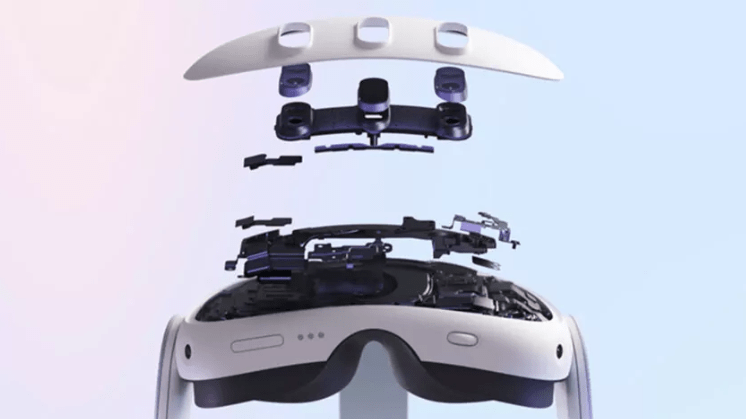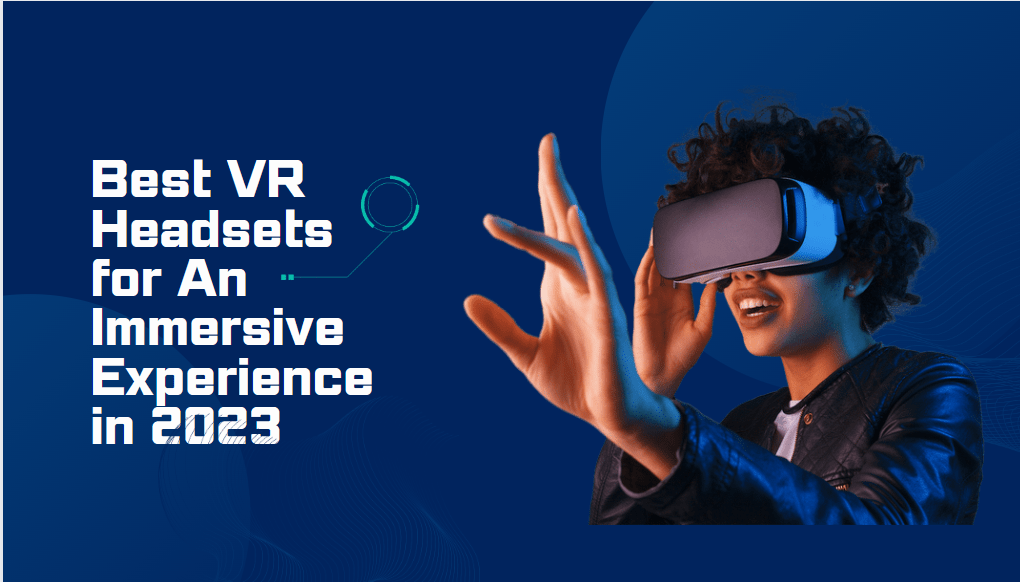Virtual Reality (VR) is revolutionizing the way we experience digital content, transporting us to captivating virtual worlds and immersive simulations. As this technology continues to advance, VR headsets have become indispensable devices for tech enthusiasts and gamers alike. Whether you’re exploring distant galaxies, battling mythical creatures, or simply seeking an escape from reality, the right VR headset can unlock boundless possibilities.
In this article, we will delve into the realm of VR and explore some of the best VR headsets available today. From cutting-edge hardware to seamless user experiences, these top contenders promise to take your virtual adventures to new heights.
Best VR Headsets to Buy Today!
Furthermore, we have listed the best VR headsets along with their features and pricing details that you can buy right away!
Meta Quest 2

The Meta Quest 2 stands out as the top VR headset currently available, offering an impressive combination of affordability and capability. While there are higher-end headsets in the market, and they are worth considering if budget is not a constraint, the Quest 2 caters to many users by providing a fantastic VR experience that satisfies their needs and preferences.
The Meta Quest 2 is a standalone VR headset priced at $300. Last year, Meta raised the price by $100; however, they later reduced it again following the announcement of the forthcoming Meta Quest 3. Anticipated features of the Quest 3 include color cameras, an upgraded processor, and a more compact design.
The Quest 2 provides an impressive, sharp, and vivid picture quality. Driving this performance is the Snapdragon XR2 System-on-Chip (SoC) from Qualcomm, representing a significant upgrade from the older Quest model’s Snapdragon 835 SoC.
In addition, the Quest 2 allows you to connect to a gaming PC, enabling the streaming of more complex VR experiences.
HTC Vive Pro 2

The HTC Vive Pro 2 features several advancements when it comes to its display technology. With a native resolution of 2448 x 2448 pixels per eye, it delivers an exceptional visual experience. This, combined with its 120Hz refresh rate and 120-degree field of view, establishes it as one of the most superior choices for immersive viewing.
In the realm of mainstream headsets, the Vive Pro 2 boasts one of the highest resolutions available for purchase. It notably outperforms the Quest 2, which settles for a resolution of 3664 x 1920. While it excels in delivering a remarkable experience for high-fidelity games, its advantages are less immediately noticeable in more stylized, cartoony titles. This implies that the headset truly shines when used with high-resolution textures and intricate models, maximizing the benefits it offers.
Naturally, achieving optimal performance from this headset demands a high-performance computer, with HTC’s recommendation being an Nvidia GeForce RTX 20-series or Radeon RX 5000-series GPU to ensure a seamless experience.
For those desiring wireless gameplay, compatibility with the HTC Vive wireless adapter is an option, albeit at an additional cost of $349 (£359), and with the trade-off of a reduced refresh rate of 90Hz— which may not be ideal for everyone.
Wearing the headset is a comfortable experience, although extended use led to some heat build-up. The inclusion of generous foam padding contributes to comfort, but it also acts as an insulator. While not the lightest headset available, its well-balanced design mitigates the feeling of excessive weight.
PlayStation VR2

Priced at $550, the PSVR 2 comes across as a costly investment, necessitating a PlayStation 5 for operation. Operating in a tethered mode rather than offering wireless freedom, the headset’s standout features include an HDR OLED display, impressive graphics quality, integrated eye tracking, and advanced controllers that mirror the tactile experience of the PS5 DualSense controllers.
These qualities imbue the headset with a premium sensation, elevating the performance of its best games to an exceptional level. It’s even positioned to potentially welcome top-notch PC VR games, although it already boasts exclusive titles like Gran Turismo 7, Resident Evil Village, and Horizon: Call of the Mountain.
However, the PSVR 2 currently lacks any social metaverse-oriented software, appearing more tailored for launching and enjoying VR games rather than providing a broader virtual experience. Many games for this headset are adaptations of titles available on platforms like Quest 2. Yet, as the library expands with titles optimized for this hardware, the PSVR 2 might distinguish itself further from the standalone VR crowd. It might be prudent to await developments unless you’re prepared to dive in and place trust in Sony now.
HP Reverb G2

If your primary criterion for selecting the finest VR headset revolves around obtaining the utmost image quality in the consumer VR sector, HP’s Reverb G2 undoubtedly emerges as the victor. Particularly for dedicated gamers or enthusiasts of VR racing simulations, this headset presents itself as a prime contender. Its resolution of 2,160×2,160 per eye and a commendable 114-degree field of view surpasses the competition within its price bracket. The headset, marked by its lightweight build and comfortable design, further elevates its appeal through the inclusion of impressive dropdown speakers developed by Valve.
Functioning as a Microsoft Windows mixed reality headset, the Reverb G2 gravitates towards Microsoft’s native Windows 10 VR ecosystem. However, it seamlessly integrates with Steam VR and is compatible with games and applications from that platform as well. Notably, the built-in camera-based room-tracking mechanism, while easier to set up compared to Valve Index’s external base stations, is somewhat susceptible to tracking errors.
The bundled controllers adhere to Microsoft’s VR controller design, although they may feel less refined than both the controllers of the Quest 2 and the Valve Index. An interesting distinction is that the over-ear speakers are the exclusive audio option, as there is no provision for a headphone jack.
Although its listed price stands at $599, frequent discounts often render the Reverb G2 available for a lower cost.
Valve Index

Displaying some of the most exceptional visuals available in the realm of widely accessible VR headsets, the Valve Index’s prowess is largely attributed to its employment of RGB LCD screens. This screen configuration, supported by a subpixel arrangement, contributes to an astonishingly sharp and clear visual experience. Despite its gradual decline in resolution rankings, its real-world performance exceeds expectations.
The Index’s field of view (FOV), spanning 130°, takes the lead in its category while managing to virtually eliminate any discernible screen door effect when immersed within the headset. It can reach a remarkable 144Hz in an experimental mode, while consistently operating at a swift 120Hz for regular usage.
Impressed so far? Undoubtedly, the Valve Index holds its position as a VR headset pioneer.
Moving beyond specifications, the comfort of wearing the Valve Index is equally impressive. While slightly heftier than the Rift S—enough to be noticeable in a direct comparison—its head strap design effectively distributes the weight across the head.
Conclusion
In the ever-evolving landscape of virtual reality, a multitude of exceptional headsets cater to diverse preferences and requirements. From the HP Reverb G2’s stunning image quality and immersive experience to the Valve Index’s groundbreaking visuals and exceptional comfort, the VR market offers a range of top-tier choices.

Related Posts
What is a juice-jacking attack? How can we be safe from such attacks?
Getting the right dashcam for your needs. All that you need to know
WhatsApp iPad App Gets Major Overhaul, Adds New Communities Feature
Moto G85 5G launched in India but is unlikely to beat VIVO or XIAOMI
Rise of deepfake technology. How is it impacting society?
Smartphone Apps Get Smarter- Meta AI’s Integration Across Popular Platforms